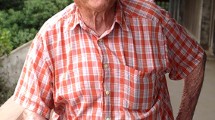Abstract
Since the early 20th century, many researchers have attempted to determine how fungi are able to emit light. The first successful experiment was obtained using the classical luciferin-luciferase test that consists of mixing under controlled conditions hot (substrate/luciferin) and cold (enzyme/luciferase) water extracts prepared from bioluminescent fungi. Failures by other researchers to reproduce those experiments using different species of fungi lead to the hypothesis of a non-enzymatic luminescent pathway. Only recently, the involvement of a luciferase in this system was proven, thus confirming its enzymatic nature. Of the 100 000 described species in Kingdom Fungi, only 71 species are known to be luminescent and they are distributed unevenly amongst four distantly related lineages. The question we address is whether the mechanism of bioluminescence is the same in all four evolutionary lineages suggesting a single origin of luminescence in the Fungi, or whether each lineage has a unique mechanism for light emission implying independent origins. We prepared hot and cold extracts of numerous species representing the four bioluminescent fungal lineages and performed cross-reactions (luciferin × luciferase) in all possible combinations using closely related non-luminescent species as controls. All cross-reactions with extracts from luminescent species yielded positive results, independent of lineage, whereas no light was emitted in cross-reactions with extracts from non-luminescent species. These results support the hypothesis that all four lineages of luminescent fungi share the same type of luciferin and luciferase, that there is a single luminescent mechanism in the Fungi, and that fungal luciferin is not a ubiquitous molecule in fungal metabolism.
Similar content being viewed by others
References
T. Wilson, W. J. Hastings, Bioluminescence, Annu. Rev. Cell Dev. Biol., 1998, 14, 197.
S. H. D. Haddock, M. A. Moline, J. F. Case, Bioluminescence in the sea, Annu. Rev. Mar. Sci., 2010, 2, 443.
O. Shimomura, Chemiluminescence of panal (a sesquiterpene) isolated from the luminous fungus Panellus stipticus, Photochem. Photobiol., 1989, 49, 355.
C. Szent-Gyorgyi, B. T. Ballou, E. Dagnal and B. Bryan, Cloning and characterization of new bioluminescent proteins, inProceedings of SPIE-The International Society for Optical Engineering (Biomedical Imaging: Reporters, Dyes, and Instrumentation), 1999, p. 4.
E. N. Harvey, A history of luminescence from the earliest times until 1900, Memoir of the American Philosophical Society, 1957, vol 44.
D. E. Desjardin, A. G. Oliveira, C. V. Stevani, Fungi bioluminescence revisited, Photochem. Photobiol. Sci., 2008, 7, 170.
P. M. Kirk, P. F. Cannon, J. C. David and J. A. Stalpers, Ainsworth and Bisby’s dictionary of the fungi, 9th edn, CAB International, Surrey, UK, 2001.
D. L. Hawksworth, Fungal diversity and its implications for genetic resource collections, Stud. Mycol., 2004, 50, 9.
D. E. Desjardin, B. A. Perry, D. J. Lodge, C. V. Stevani, E. Nagasawa, Luminescent Mycena: new and noteworthy species, Mycologia, 2010, 102, 459.
P. B. Matheny, J. M. Curtis, V. Hofstetter, M. C. Aime, J.-M. Moncalvo, Z.-W. Ge, Z.-L. Yang, J. C. Slot, J. F. Ammirati, T. J. Baroni, N. L. Bougher, K. W. Hughes, D. J. Lodge, R. W. Kerrigan, M. T. Seidl, D. K. Aanen, M. DeNitis, G. M. Daniele, D. E. Desjardin, B. R. Kropp, L. L. Norvell, A. Parker, E. C. Vellinga, R. Vilgalys, D. S. Hibbett, Major clades of Agaricales: a multilocus phylogenetic overview, Mycologia, 2006, 98, 982.
A. G. Oliveira, C. V. Stevani, The enzymatic nature of fungal bioluminescence, Photochem. Photobiol. Sci., 2009, 8, 1416.
R. Dubois, Note sur la fonction photogénique chez la Pholas dactylus, C. R. Seances Soc. Biol. Paris, 1887, 39, 564.
R. L. Airth, G. E. Foerster, The isolation of catalytic components required for cell-free fungal bioluminescence, Arch. Biochem. Biophys., 1962, 97, 567.
R. L. Airth, G. E. Foerster, Enzymes associated with bioluminescence in Panus stypticus luminescence and Panus stypticus non-luminescencens, J. Bacteriol., 1964, 88, 1372.
R. L. Airth, G. E. Foerster and P. Q. Behrens, The luminous fungi, inBioluminescence in Progress, ed. F. H. Johnson and Y. Haneda, Princeton University Press, Princeton, NJ, 1966, p. 205.
O. Shimomura, Chemiluminescence of panal (a sesquiterpene) isolated from the luminous fungus Panellus stipticus, Photochem. Photobiol., 1989, 49, 355.
D. E. Desjardin, M. Capelari, C. V. Stevani, A new bioluminescent agaric species from São Paulo, Brazil, Fungal Div., 2005, 18, 9.
L. F. Mendes, E. L. Bastos, D. E. Desjardin, C. V. Stevani, Influence of culture conditions on mycelial growth and bioluminescence of Gerronema viridilucens, FEMS Microbiol. Lett., 2008, 282, 132.
M. Capelari, D. E. Desjardin, B. A. Perry, T. Asai, C. V. Stevani, Neonothopanus gardneri: a new combination for a bioluminescent Agaric from Brazil, Mycologia, 2011, 103, 1433.
D. E. Desjardin, M. Capelari, C. V. Stevani, Bioluminescent Mycena species from São Paulo, Brazil, Mycologia, 2007, 99, 317.
M. M. Bradford, Rapid and sensitive method for the quantitation of microgram quantities of protein utilizing the principle of protein-dye binding, Anal. Biochem., 1976, 72, 248.
R. L. Airth, W. D. McElroy, Light emission from extracts of luminous fungi, J. Bacteriol., 1959, 77, 249.
Author information
Authors and Affiliations
Corresponding author
Additional information
Electronic supplementary information (ESI) available. See DOI: 10.1039/c2pp25032b
Rights and permissions
About this article
Cite this article
Oliveira, A.G., Desjardin, D.E., Perry, B.A. et al. Evidence that a single bioluminescent system is shared by all known bioluminescent fungal lineages. Photochem Photobiol Sci 11, 848–852 (2012). https://doi.org/10.1039/c2pp25032b
Received:
Accepted:
Published:
Issue Date:
DOI: https://doi.org/10.1039/c2pp25032b




